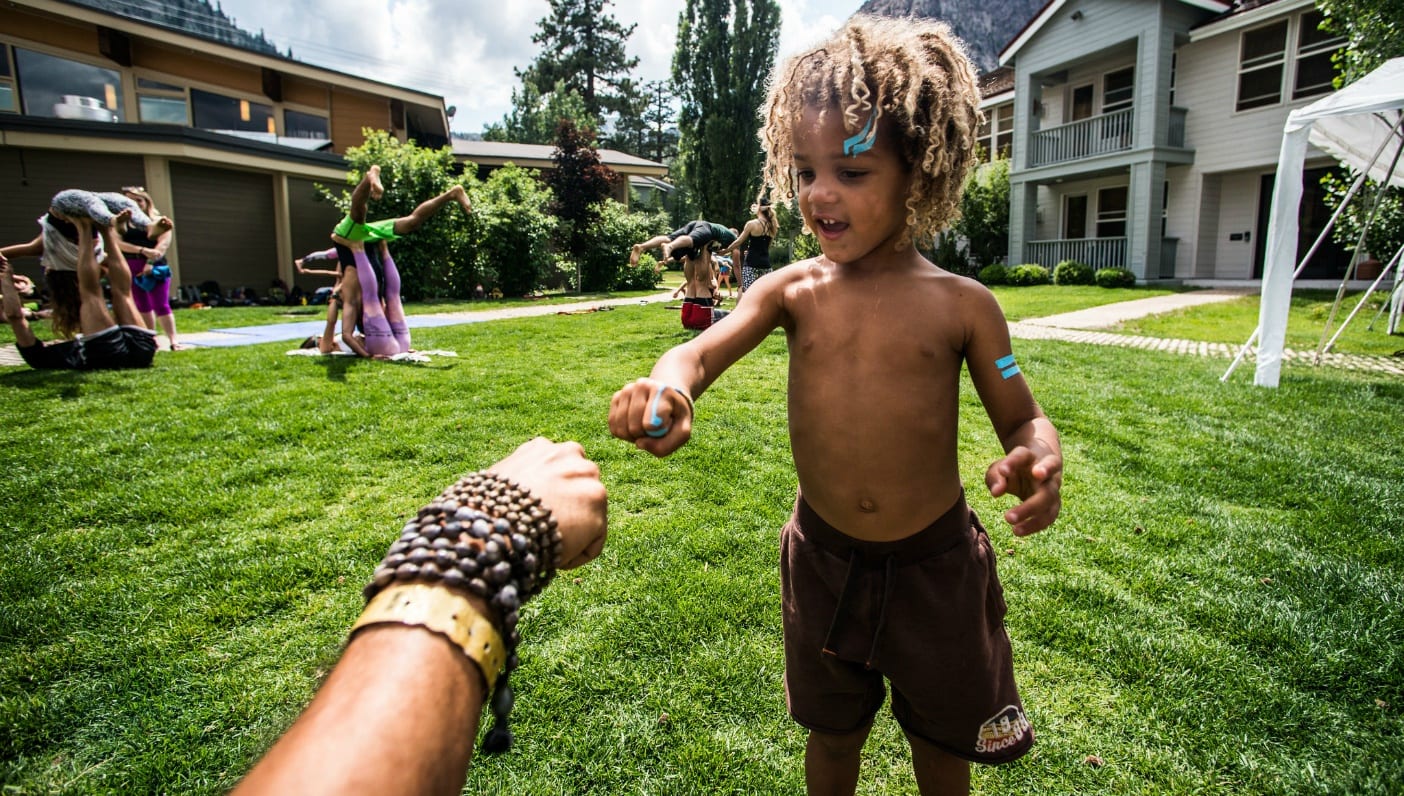
As yoga has become one of the most popular pastimes in the West, it has invariably led to a discussion around its cultural appropriation. There is a concern that the Western adoption of yoga is disrespecting and diluting an ancient and sacred Indian tradition—and it’s not a concern to take lightly.
I have been fortunate to study a traditional path of yoga through the teachings of the Gita and Sutras, and my teachers emphasized a physical practice as part of a larger exploration of the subtle body and path to Samadhi. It was therefore something of a shock when I began teaching in New York to discover some students had no appetite for the foundations of yoga—they had simply come to sweat. Some wanted more upbeat music (trance, reggae, jazz) and a faster-paced class. Some expected a Buddhist or Hindu slant. Others wanted nothing but commands. And then there were those who wanted wine-tasting after savasana.
Yoga’s very nature is unity.
In the early days I was judgmental, but the experience taught me that I had to humble myself greatly to set aside notions of ‘my yoga’ as the ‘right’ yoga, in just the same way I had had to learn that my opinions in the world were not the ‘right’ opinions. I also had to learn that ‘my yoga’ was not impacted by anyone else, so I had no reason to feel defensive. As yoga broke down the social and cultural judgements I had made, my perception altered to instead see wonder in the unique paths trodden by each of us. While I didn’t change my teaching style, I nonetheless chose instead to celebrate the similarities I saw shared by all practicing yogis – a yearning to love ourselves and others more deeply, and an inexplicable desire to practice.
Yoga Bridges Cultural Divides
In reality, how can yoga not reach across cultural divides? It helps to destroy mind-made boundaries, and thereby connects us with one another. For one, yoga’s very nature is unity—a process through which the body, mind and spirit come into harmony. And the ultimate realization that lies in Samadhi is that we are part of something far greater than the labels our smaller selves have assigned us. Within yoga all are welcome — spiritual seeker or atheist, Samaritan or thief, from any demographic or culture, and in any part of the world.
Coming together in physical practice we also create something of a tribe as we move, breathe and meditate in tandem. In the individual acts of movement, amidst the internal battle to still a wandering mind and open a heart, and through the test of our own strength and resolve, we become a united force.
Yoga Around the World
Lisa Taylor, founder of Evolution Power Yoga, and mentor of the non-profit Africa Yoga Project once described to me her experience of teaching 150 students in Kenya from 12 different countries of diverse populations. Her comments capture what we inherently know — yoga breaks down walls.
“What I saw in the midst of the two weeks together was,” says Lisa, „that the innate need to assess one’s place in relation to others—the automatic reactions of being on guard because we are different—had dissolved with the simple act of being physical and sweating together. There was a real unity that left me feeling hopeful, and believing in the miracle of yoga.”
While we hopefully have each experienced this ‘oneness’ in the company of others during yoga, I have also learned that different cultural perspectives deepen a practice. I am British/Irish, and it was through exploring Celtic Yoga, for example, that I was able to come to my yoga practice from a more familiar place. I have met those who feel the same way about Kemetic Yoga. I now trust that the authenticity and honoring of my own ‘take’ on yoga benefits others, in the same way I know that their authentic expression of yoga serves me too. What a beautiful image: A global web of yogis each practicing according to our unique histories, and thereby strengthening the threads that join us.
In the individual acts of movement, amidst the internal battle to still a wandering mind and open a heart, and through the test of our own strength and resolve, we become a united force.
I also remind myself that great yogis were called to the West with the goal of spreading these teachings of wisdom and peace around the globe. Teacher Rameen Peyrow once pointed out to me that we cannot resist evolution—even of yoga—and I take his words to heart. There may be some growing pains as we navigate our individual and collective path of yoga in this new age (my eyes still instinctively roll when I see ‘yoga with your pet fish’… that is, until I picture the smiling face of the person practicing).
But the point is, if we yogis across cultures focus on the greater picture—the inherent inclusive nature of yoga, and its healing ability to bring into wholeness all who come to its path—and we spread that, well, who knows the miracles that could be accomplished.
—

Helen Avery is a senior writer for Wanderlust Media, and journalist, yoga teacher, and minister. She heads up spirituality and myth for Astronomy group, Slooh, and teaches Eastern wisdom for Awakening Together. You can find out more about her on her website, Life as Love.